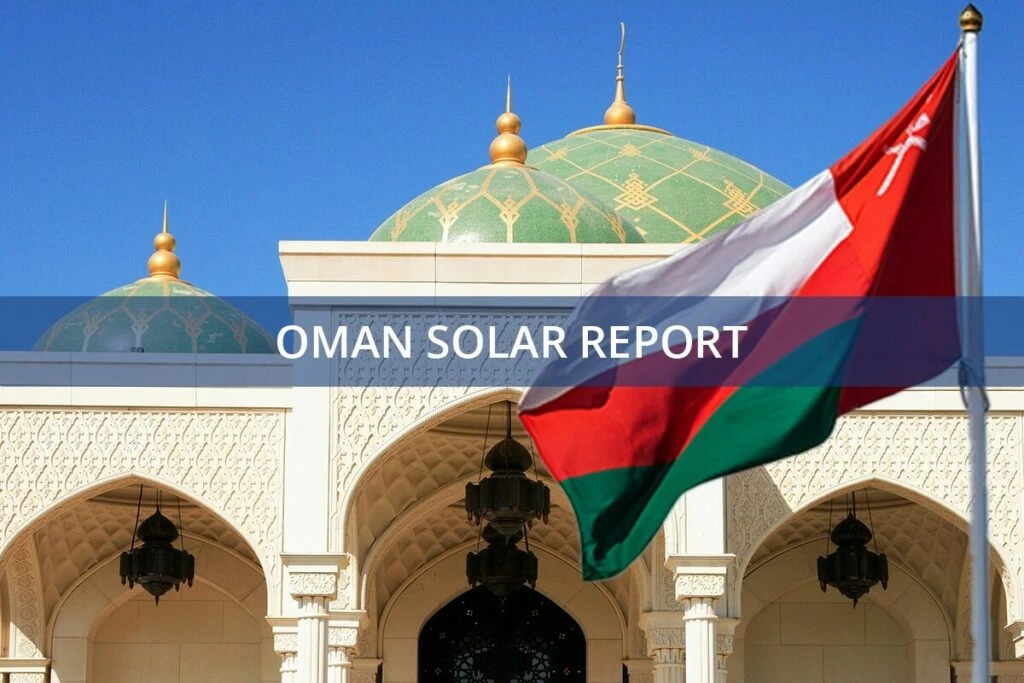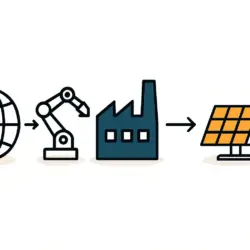Oman is making significant strides in its renewable energy transition, with the Sultanate firmly on track to generate at least 11.5% of its electricity from renewable sources by mid-2025. This ambitious target, highlighted by Ahmed bin Saif Al-Mazrouei, Director General of Renewable Energy and Hydrogen at the Ministry of Energy and Minerals, is a crucial milestone in the nation’s journey towards a sustainable energy future.
Oman Renewable Energy Projects
A portfolio of large-scale projects underpins Oman’s clean energy progress. The 50-megawatt Dhofar Wind Station, operational since 2020, was a pioneering step. It was soon dwarfed by the massive 500-megawatt Ibri Solar Park, which came online in 2022. The momentum continues with the Manah 1 and Manah 2 solar plants, set to add a combined 1,000 megawatts to the grid upon their completion in mid-2025. The financial closure for these projects was successfully achieved in July 2023, securing their path to operation.
According to the Oman News Agency, these developments are part of a broader strategy that saw renewables contribute 6.5% to the electricity mix by the end of 2023. This growth is heavily supported by private sector involvement, with companies winning contracts to build and operate these state-of-the-art power plants, as detailed in the Oman Solar Production Report.
Future Projects and Strategic Investments in Oman renewable energy
Looking ahead, Oman’s renewable ambitions are set to accelerate. The pipeline includes the Ibri 2 solar power plant (500 MW), scheduled for a 2026 launch, and the even larger Ibri III project, which will be coupled with a 100 MWh Oman battery project to ensure grid stability. Furthermore, new wind projects in Mahout, Duqm, and Sadah are planned, with a potential combined capacity exceeding 1,000 MW.
Beyond solar and wind, Oman is strategically positioning itself as a global leader in green hydrogen production. Leveraging its abundant clean energy resources, the country aims to produce 1 to 1.5 million tons of green hydrogen by 2030, targeting the export market. These efforts are part of a long-term vision that sets even more ambitious Oman’s Solar Goals, aiming for 30% renewable electricity by 2030 and net-zero emissions by 2050.
Economic and Environmental Impact of Oman renewable energy
The shift towards renewable energy is a cornerstone of Oman’s economic diversification strategy. It is creating significant opportunities for investment and job creation, with public-private partnerships driving the development of critical infrastructure. This transition supports the growth of new industries, from the basics of manufacturing solar components to advanced green steel production, which leverages cheap, clean electricity.
Oman’s commitment is reflected in its proactive policies and financial mechanisms, such as the Energy Transition Fund, established to support clean energy projects. This rapid Oman renewable energy growth not only reduces the country’s reliance on fossil fuels and cuts greenhouse gas emissions but also aligns perfectly with Oman Vision 2040. This national blueprint aims to increase the contribution of non-oil sectors to over 90% of the economy, ensuring a prosperous and sustainable future.
The progress made in the renewable energy sector is a powerful testament to the country’s dedication to achieving these long-term goals and contributing to global climate action. To learn more about the technical side of this energy revolution, from the solar panel manufacturing process to the equipment involved, explore our comprehensive guides.
If you’re inspired by Oman’s journey and want to deepen your understanding of the solar industry, sign up for our free e-course to get started.



